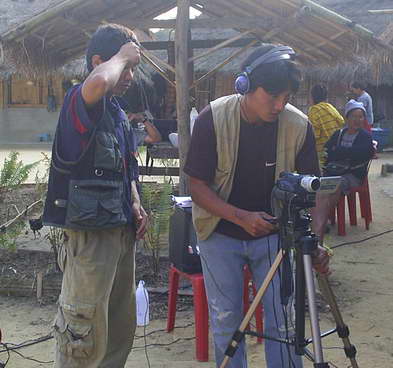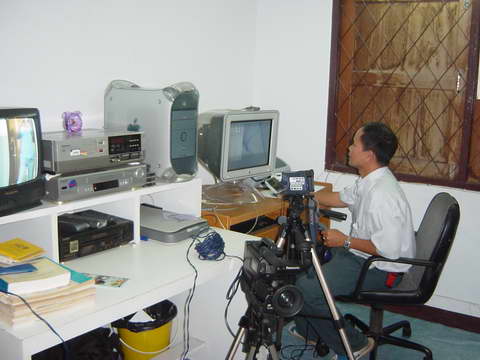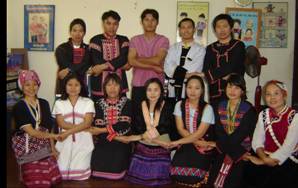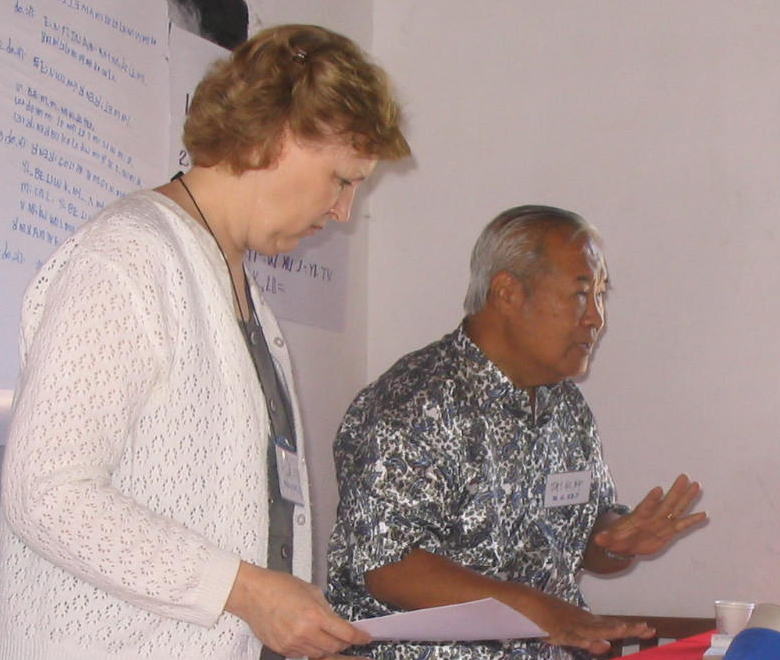|

|
|
|
The Health Project for Tribal
People (HPTP) is a group of ethnic minority Christian workers who are
concerned about AIDS and its impact on the ethnic minorities of Thailand.
When the project began in 1991, teaching basic AIDS information was the first
area of concern. Since that time, HPTP has broadened its scope to include
basic health care issues, has started homecare in the villages and has begun
providing support for AIDS orphans from different ethnic minorities. The
group has also opened a hospice for ethnic minority women with AIDS and their
children (1995), a day care center for ethnic minority children (2001) and a
youth center for tribal youth at risk (2001).
Vision Statement
The vision of HPTP is that HIV/AIDS prevention and care will become a shared
responsibility of the families and ethnic minority communities. It is
expected that ethnic minorities living in Thailand will have access to AIDS
education in a language they can understand and that they will have adequate
medical care. HPTP's aim is for ethnic minority
groups to work together and create networks within the wider society to
eliminate HIV/AIDS and its negative impact in their communities.
|
|
|
|
Goals of HPTP
- Ethnic minorities will
know the essential information about HIV/AIDS prevention and
transmission
- Women will understand
how to prevent mother-to-child transmission and will be able to access
government programs designed to help in this prevention
- Ethnic minority
families will be able to provide appropriate home care for those living
with HIV/AIDS
- Ethnic minority
families will understand how to access medical care
- HIV/AIDS orphans will
remain within extended families and continue to receive an education
- Ethnic minority Christians
will model a Christian response to AIDS by ministering with compassion
to the physical, emotional and spiritual needs of those living with
HIV/AIDS
|

|
|

|
|
|
Initially, because of the high illiteracy rate, the Health Project made a
decision to teach basic AIDS information using pictures that were appropriate
for the different ethnic minority groups. These pictures were arranged into
flip charts. HPTP held seminars and trained village headmen, traveling
evangelists and women leaders to teach with the flip charts. The change in
understanding has been dramatic. Initial surveys revealed that in one tribal
group 85% of the ethnic minority people had heard about AIDS, however, not
one person had understood that a mother could pass the disease to an unborn
child. Now with the new training materials, 98% understood this mode of
transmission.
|



|
|
|
Beside flip charts, other materials were developed to
reinforce the training.
- Posters in bright
colors that teach basic AIDS education
- Audiocassettes with
stories and songs
- Videos/DVDs-written, filmed,
produced and edited by HPTP staff
- Calendars with a
relevant AIDS message
|
|
|
The second phase of training was to teach about health
issues so that families could do home care for the person living with HIV.
Some of the subjects covered include respiratory problems, skin problems and
treating dehydration and diarrhea.
Besides teaching and developing new materials yearly, follow-up and
evaluation are on-going concerns. The HPTP staff also does regular visits to
villages to do post-testing and checking. Village visits additionally provide
an opportunity for HPTP staff to visit with PHAs
(persons with HIV/AIDS) and offer support to an increasing number of AIDS
orphans.
|
|
|

|
|
|
|
|
|
|
|
|
|
|
|
|
|
|
|
|
|
|
|
|
|
|

|









